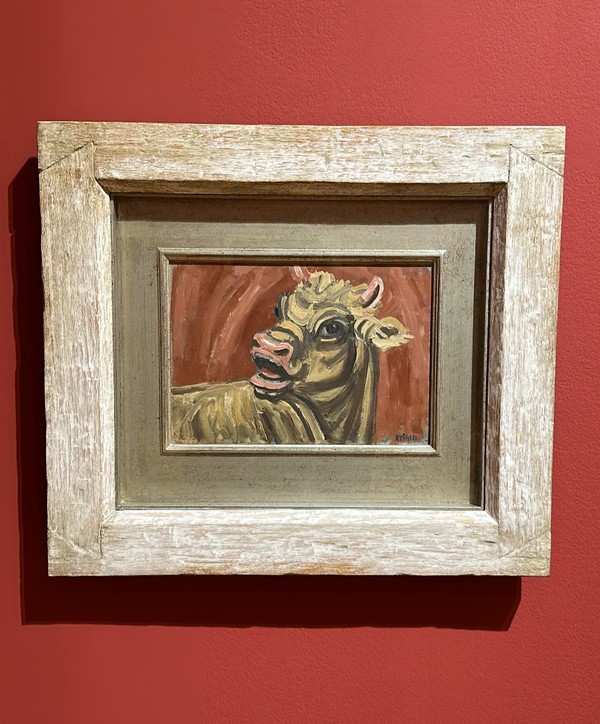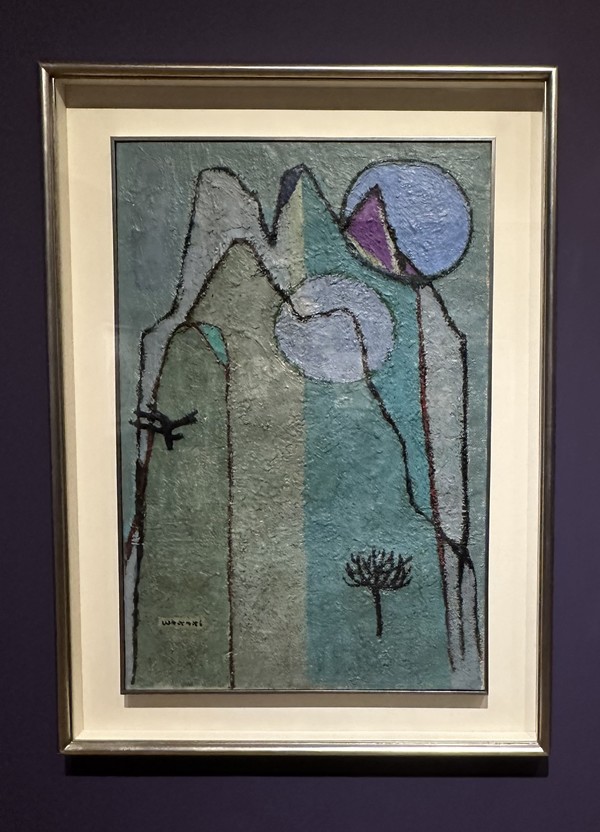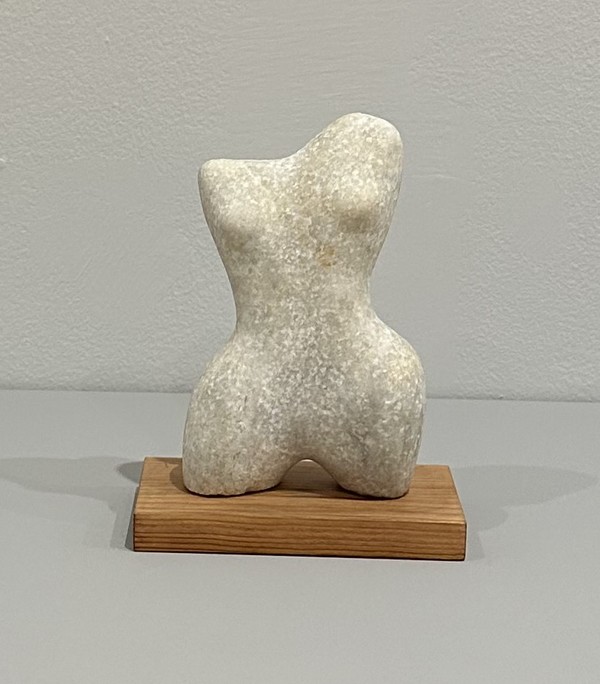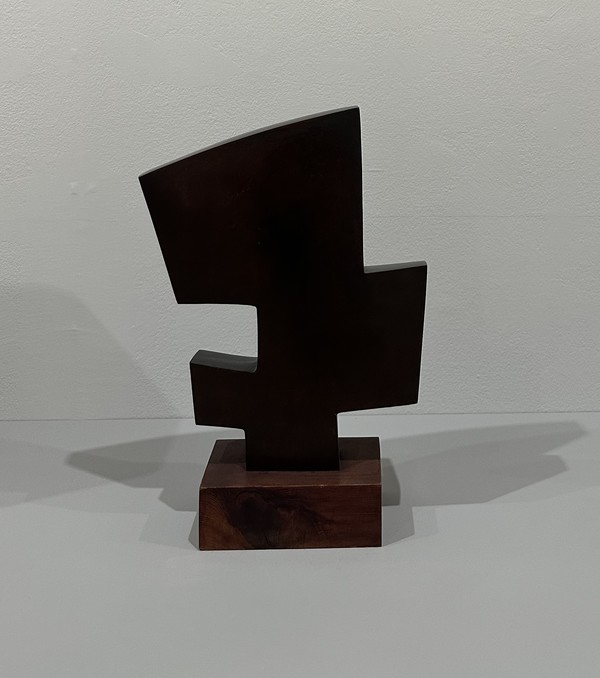In 1988, there was an unforgettable event that excited everyone in Korea. The 1988 Summer Olympics. Soma Museum held the exhibition ‘Re_SPECT: Korean Modern Art’ to celebrate the 35th anniversary of the 1988 Summer Olympics and illuminate the history of Korean art in step with rough Korean modern and contemporary history. This exhibition traces the flow of the significant currents of Korean art history from 1920, when Korean artists began earnestly accepting Western artistic techniques, to the Seoul Olympics, a cultural turning point, which marks the significant purpose of this exhibition. In the exhibition, the visitors can see ‘our’ artworks which reflect the deep emotions of our nation. Because our nation stood up and overcame various difficulties including foreign invasions, colonial pain, liberation, the division caused by war, dictatorship and more. Let’s keep in mind the footprints of our nation by looking at the artworks of 25 representative artists of modern and contemporary Korean art. CAH invites you to ‘Re_SPECT: Korean Modern Art’ where you can explore everything about Korean modern art through a diverse spectrum of artworks.
This special exhibition comprises five sub-themes that focus on the self-generation and subjectivity of Korean art.
Our Land, The Song of Our People
In section 1, many works show the spirit of artists who concentrated on finding our nation’s identity through the use of indigenous themes and styles during a time when foreign invasions were rampant. In other words, the visitors can directly feel the joys and sorrows of the Korean people by viewing the artworks in section 1. As soon as entering section 1, the works of famous artists catch our eyes, Lee Jung-seob, Park Soo-keun and etc. The works are exhibited on a white background wall surrounded by a red frame. The strong red frame symbolizes the resilience of our nation, enduring the difficulties. There are also letters written by the artists. Therefore, the visitors can feel the artists’ intention directly compared with the other exhibitions. We can see the prominent work Bull by Lee Jung-seob, which is in the promotional exhibition poster in section 1. In the intensely red-colored background frame of the artwork, particularly in the eyes of the bull, we can feel the unwavering spirit of the Korean people. Moreover, the exhibition not only showcases the artwork but also presents the letters written by the artist Lee Jung-seob to his wife and children, allowing visitors to glimpse into the various emotions, artistic spirit, and even his life. This aspect adds even more value to the visit of this exhibition.

Diaspora, The Margins of the National History
In contrast to section 1, which is composed of artworks that reflect the times of tragedy in national history caused by foreign powers, section 2 exhibits the works that dealt with the pain caused by the division of Korean people that continues. After reviewing this section, the visitor will have the opportunity to reflect on the division in art between North and South Korea, which goes beyond the division of territory and ideology. Unlike other sections, the artworks in section 2 are unknown to the people. The lack of popularity itself can be seen as a manifestation of our nation's division, as it has led to a fragmented art history where works by North Korean artists, and overseas Korean artists are displayed. In the work, Self-Portrait Wearing a Durumagi by Lee Que-de, we can see a lonely man describing gloomy times. Next to the artwork, there is a letter he sent to his wife while he was in the Geojedo Prison Camp, expressing his longing for his family. Reading this letter, the visitors can feel the senses he experienced, as if the loneliness is contained through the words. Moreover, the man’s loneliness depicted in the paintings becomes even more pronounced.

Woman, Another Art History
After viewing the previous section, where most Korean artworks were made by male-painters. This section traced back the footprints of Korean female painters who made the differences in the male centered traditional art world. Before, it was uncommon to approach the art from the perspective of female artists, so this exhibition stands out for its exceptional value. Moreover, it holds significant importance as it challenges the established paradigm of male-centric art history often considered mainstream. There are many artworks by modern Korean female artists. Surprisingly, they all have the experiences of studying abroad. It serves as a unique and remarkable commonality among them. Despite the patriarchal society of that time, where education for women was challenging to attain in general, these artists can be seen as those who were able to defy the status quo. All artworks in section 3, including Chun Kyung-ja’s work Flowers and Butterflies, make a distinct atmosphere compared to the other sections. With their bright and lively colors, these artworks allow visitors to sense the unwavering determination of women who constantly strived to prove their identity in an era where much stricter standards existed for women.

Abstract, The Challenges and Achievements of Globalization
Section 4 contains the abstract works which are evaluated as a convergence of Eastern and Western influences, transcending traditional indigenous styles. During that time, artists ventured into advanced art while preserving our identity, boldly challenging the global trend in art, and leading the remarkable development of abstract art. In the representative piece, Mountain by Kim Whan Ki, the visitors can know that he painted the mountain which has long been a traditional subject in Korean art, even though modernism. When you read the entries from his diary displayed alongside the artworks, you can feel the emotions without the need for explicit explanation, making you contemplate the beauty of abstract art even more deeply.

Sculpture, Cutting Time
In the last section, visitors can explore the sculptural artworks that offer a different charm compared to paintings. After viewing various works, including Kim Chong-young's Work 68-1 you will experience the resonance that sculptures carry. As sculptural art is not as mainstream as other art forms, we can approach the final section with excitement and curiosity. Throughout the history of sculptural art, artists have continually overcome significant constraints regarding time and space during the creation process. Understanding the intricate history of sculptural art through this exhibition allows one to appreciate the preciousness of the process leading to the blossoming of modern Korean sculptural art. In this sense, the exhibition at the Soma Art Museum provides a valuable opportunity to explore both the past and future of Korean sculptural art simultaneously.


In the aspect that the visitors can see the well-known Korean artists’ works who represent modern and contemporary Korea, this exhibition has its own value. However, this exhibition goes beyond merely displaying artworks; it highlights the artistic worlds of each artist, almost like unfolding vivid pages of a history book that recreates that time. This special exhibition allows you to sense the artists' pure and unwavering determination to overcome the challenging times and their complex concerns. A unique display awaits you, where you can feel the depth of their emotions and thoughts.
Date: 2023.04.06~2023.08.27 (Closed: Every Monday)
Place: Soma Seoul Olympic
Ticket Price: Adult (19~64) 15,000 won / Children (5~18) 9,000 won / Special Discount 9,000 won
Running Time: 60 minutes

